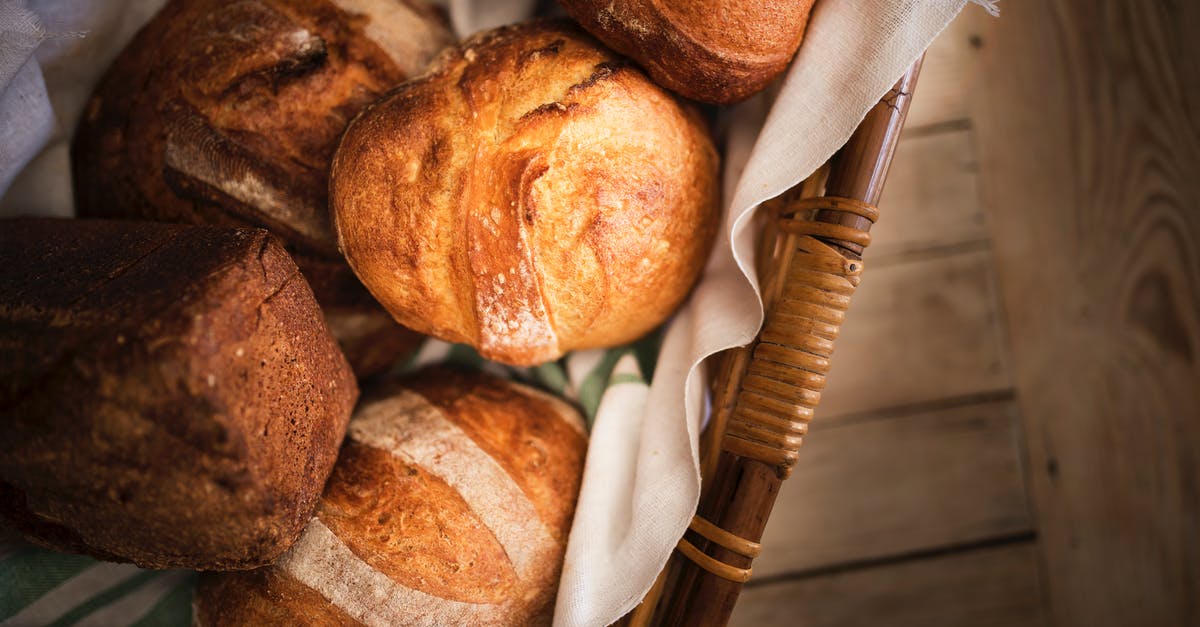Commercial yeast ( Saccharomyces cerevisiae) in a sourdough culture

I would like to know a good reason for adding commercial yeast (Saccharomyces cerevisiae) to a sourdough culture and would it survive?
Best Answer
I think the question could refer to two somewhat different practices: (1) adding some commercial yeast to a particular sourdough recipe during the initial mix, or (2) adding commercial yeast to the sourdough culture itself, intending it to propagate from batch to batch.
The first -- mixing in commercial yeast along with sourdough starter in a recipe -- is commonly used by bakers for a few different reasons:
- Enhance rising, particularly in heavy doughs (e.g., with lots of non-wheat whole grains or seeds, or with a lot of other added "stuff" like fruit, vegetables, nuts, meats, etc. to weigh it down). It also tends to be used in very rich doughs where sourdough yeast may not be as "happy" as commercial yeast.
- Provide a more reliable fermentation timetable: sourdough can sometimes be finicky and unpredictable, but commercial bakers often need to bake on an exact schedule. Commercial yeast is pretty dependable.
- Avoid an overly sour taste: natural (sourdough) yeast can be used for basically any type of bread, and for sweeter breads or standard (non-"sour") white breads, a pungent taste may be undesirable. In some cases, though, it may be difficult to achieve adequate rising before the dough turns too sour, so commercial yeast can give the dough a boost.
The second possibility -- adding commercial yeast to the sourdough culture directly -- is pretty rare and ultimately not very helpful in the long run. Some sourdough recipes suggest adding commercial yeast to "get a starter going" initially, but this is NOT a good practice, since it tends to delay the establishment of the natural yeast you actually want and need to propagate the starter longterm. When added to an established starter, commercial yeast will generally die off within a few feeding cycles. The acidic environment is not conducive to yeast growth in general, and commercial yeast will have a much harder time with it than the natural yeasts of established starters -- so the commercial yeast will decrease population significantly with each feeding.
All of that said, actual studies of sourdough cultures from commercial bakeries often show some baker's yeast as a minor component. This is likely due to contamination from bakers' hands and equipment where commercial yeast-based doughs are also handled and mixed. In controlled lab environments, the commercial yeast populations in those starters have been shown to die off pretty quickly after the starters were removed from their "native" bakery environment.
Pictures about "Commercial yeast ( Saccharomyces cerevisiae) in a sourdough culture"



Can you use commercial yeast for sourdough bread?
If you want sourdough bread that rises reliably every time, both on the counter and in the oven, commercial yeast is your best friend. Barring anything really extreme (e.g., being killed by boiling water or dried out by an overdose of salt), commercial yeast will make your bread rise no matter what.What happens if you add commercial yeast to sourdough starter?
When it comes to sourdough starters, time = flavor. Over a period of months, the flavor of a starter develops depending on the conditions it is kept in. By adding yeast, you're interfering in the natural lifecycle of the microorganisms growing in the starter.Is Saccharomyces cerevisiae in sourdough?
Saccharomyces cerevisiae (baker's yeast) is an important part of the microbial consortia of sourdough steamed bread and plays a key role as a leavening agent by producing carbon dioxide through the alcoholic fermentation of sugars and thus increased the volume of loaf (Paramithiotis et al. 2000).What yeast is used in sourdough bread?
One kind of this fungus dominates store shelves: a species known as \u201cbaker's yeast,\u201d Saccharomyces cerevisiae. It's particularly good at puffing up breads, but it's also made of living, breeding organisms \u2014 meaning the yeast can change genetically over time and possibly fail to deliver the exact results bakers want.Is Using Commercial Yeast In Sourdough Bread Healthy? | #AskWardee 031
More answers regarding commercial yeast ( Saccharomyces cerevisiae) in a sourdough culture
Answer 2
It would probably survive, and possibly dominate as it's selected for reproducing fast. But the exact behaviour would depend on when you added it. Added late (i.e. just before the culture is used) it's probably meant to make a reliable rise while keeping a sourdough flavour. Whether this works or not is another matter.
Sources: Stack Exchange - This article follows the attribution requirements of Stack Exchange and is licensed under CC BY-SA 3.0.
Images: Piotr Arnoldes, subbu noir, Yan Krukov, Yan Krukov
